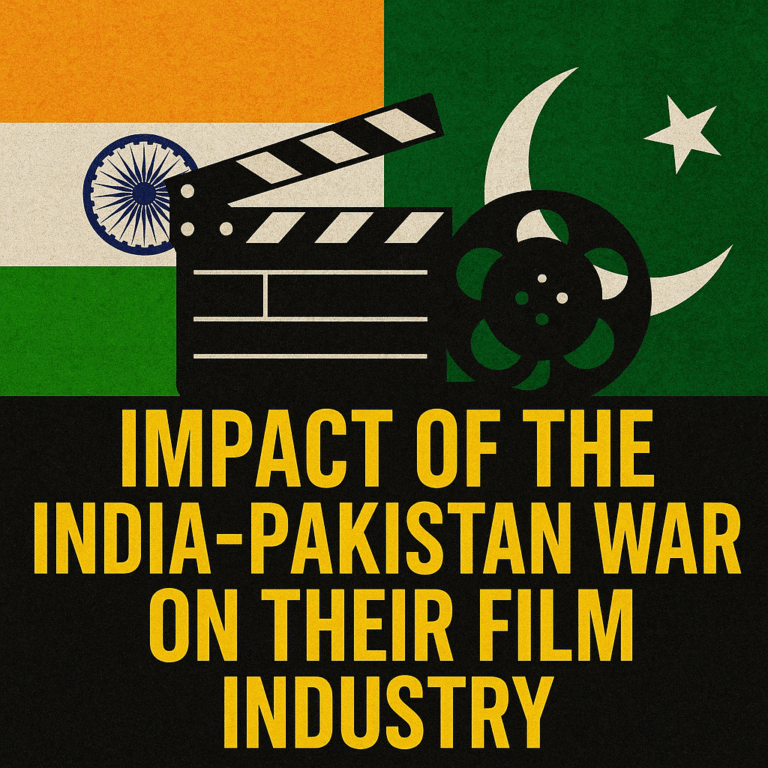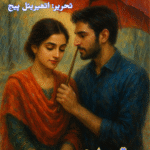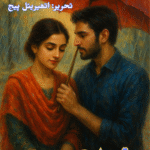The Indo-Pakistani conflicts have profoundly influenced the film industries of both nations, intertwining cinema with politics, nationalism, and cultural identity. This article delves into how these wars have shaped Bollywood and Lollywood, affecting artistic expression and cross-border collaborations.

A Legacy of Bans and Cultural Isolation
The 1965 war marked a significant turning point, leading Pakistan to impose a comprehensive ban on Indian films—a prohibition that persisted for four decades. This move aimed to bolster Pakistan’s domestic film industry, Lollywood, and foster a distinct national identity. However, the ban inadvertently stifled the industry, resulting in the closure of numerous cinemas and a decline in local film production. Despite official restrictions, Indian cinema remained popular among Pakistani audiences through pirated VHS tapes and satellite broadcasts. (Forbes, Daily Jang, Indiatimes)
In India, the portrayal of Pakistan in films evolved. While early depictions were more neutral, the 1997 release of “Border” marked a shift towards overt nationalism, portraying Pakistan as the antagonist. This trend continued with films like “Uri: The Surgical Strike” and “Raazi,” which dramatized military conflicts and espionage, reinforcing nationalistic sentiments. (Daily Jang, Wikipedia)
Economic Interdependence and Cultural Exchange
Despite political tensions, Bollywood has maintained a significant presence in Pakistan’s entertainment landscape. At its peak, Indian films accounted for approximately 60-70% of Pakistan’s cinema revenue. The 2016 Uri attack led to a temporary ban on Bollywood films in Pakistan, resulting in substantial financial losses for cinema owners and the layoff of nearly 2,000 employees. (Forbes, Time)
Conversely, Pakistani artists have made notable contributions to Bollywood. Actors like Fawad Khan and musicians such as Atif Aslam and Rahat Fateh Ali Khan gained popularity in India, fostering cultural exchange. However, political events often disrupted these collaborations. Following the 2016 Uri attack, the Indian Motion Picture Producers Association (IMPPA) banned Pakistani artists from working in India, leading to a reciprocal ban by Pakistan on Indian content. (AP News, Forbes, Wikipedia)
Cinema as a Reflection of National Identity
Both countries have utilized cinema to project national narratives. In India, films like “The Kashmir Files” and “Article 370” have been criticized for portraying Muslims negatively, potentially exacerbating communal tensions. In Pakistan, state-sponsored films often depict Indian forces as aggressors, aiming to reinforce nationalistic sentiments. However, such films have struggled commercially, indicating a disconnect between state narratives and audience preferences. (The Express Tribune, Indianarrative)
The Resilience of Cultural Bonds
Despite official bans and political rhetoric, cultural exchanges have persisted. Pakistani television dramas have garnered substantial viewership in India, accessible through platforms like YouTube and ZEE5. These dramas, known for their realistic storytelling and emotional depth, have bridged cultural divides, offering Indian audiences a nuanced perspective of Pakistani society. (AP News)
Similarly, Indian audiences continue to appreciate Pakistani music and literature, indicating a shared cultural heritage that transcends political boundaries.(AP News)
Conclusion
The Indo-Pakistani wars have left an indelible mark on the film industries of both nations, intertwining cinema with national identity and political discourse. While conflicts have led to censorship and disrupted collaborations, the enduring popularity of cross-border content underscores the resilience of cultural bonds. As both countries navigate complex political landscapes, cinema remains a potent medium for fostering dialogue, understanding, and perhaps, reconciliation.
Note: This article is an original composition based on verified sources.



